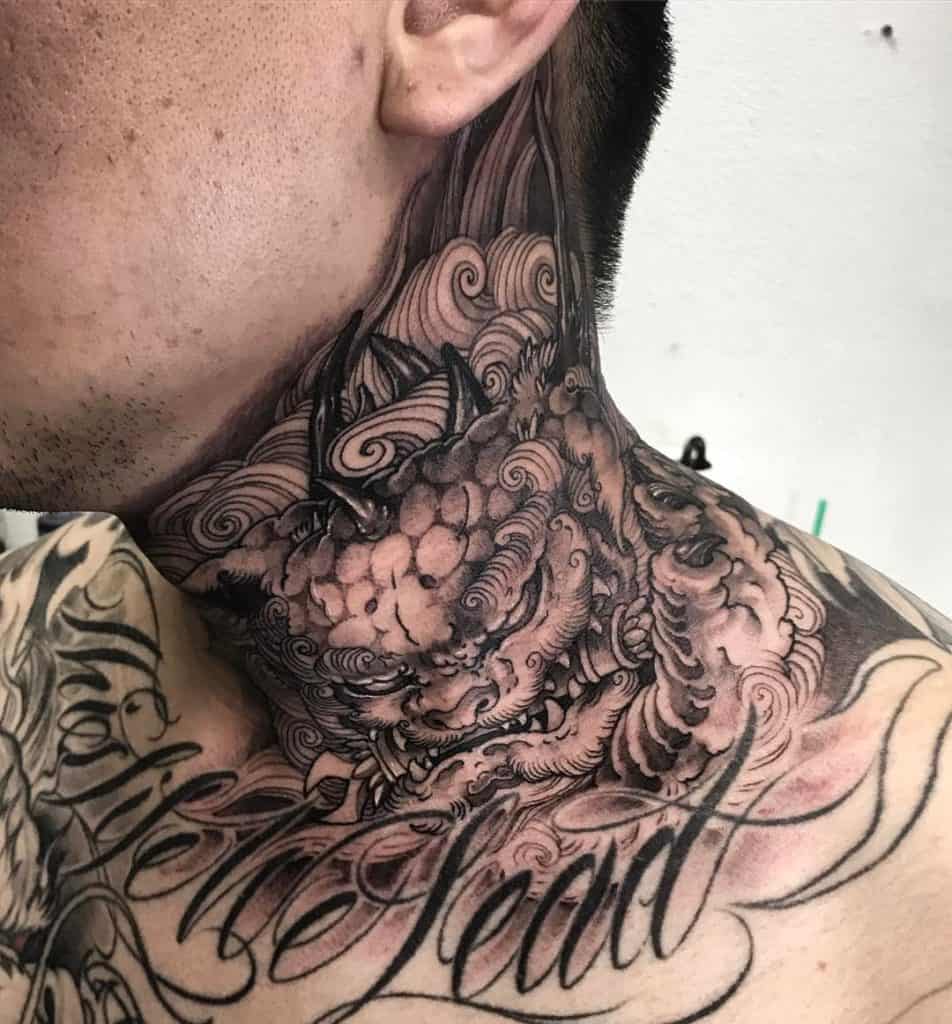Tattoos are beautiful forms of self-expression, but they require proper care and attention during the healing process to ensure optimal results. Whether you're a tattoo enthusiast or considering getting your first tattoo, understanding how long it takes for a tattoo to heal is crucial. In this comprehensive guide, we'll delve into the intricate details of tattoo healing, covering essential stages, factors that influence healing time, aftercare tips, and expert advice from Chronic Ink Tattoo.
There’s no set amount of time that it takes for a new tattoo to heal. But during the first two to four weeks, you must perform specific aftercare procedures to help your new tat heal fully and properly. You might think that your tattoo appears to be fully healed after a couple of weeks, though it actually takes a few additional weeks more for all of the layers of your tattooed skin to return to normal. In fact, complete healing of every layer of broken skin can take as long as four months. How long it takes to heal depends, to a large extent, on how well you care for your tattoo and the surrounding area. In this post, we’ll give you some simple aftercare tips and point out what you should avoid just after you get inked.
Immediate Aftercare Instructions
Aftercare starts before you even leave the tattoo shop. As soon as your tattoo is complete, the artist layers moisturizer or tattoo jelly on your art and applies a plastic wrap or bandage to the area. It’s remarkably tempting to remove that protective wrap so you can get a quick look at your new artwork. But resist that temptation for at least a few hours. Speak with your tattoo artist about how long you need to leave the bandage in place. The time will vary according to the size of your tattoo and its location. The tattoo covering safeguards your open wound against bacteria and UV rays. The wrap also ensures that your tattoo doesn’t rub against your clothing. The next aftercare step involves washing your tattoo gently.
First Washing
You should wait at least five hours before washing your new tattoo. Remove the bandage and carefully clean your fresh pride-and-joy with some warm water and hypoallergenic soap. Use your fingers rather than a sponge or flannel. Be gentle. As you wash, the moisturizer on your skin starts to come away. You’re also likely to notice a thick, sticky discharge. Don't panic; it’s nothing more than the surplus fluid and ink coming free. Once you’ve finished washing the area, pat your skin dry with a tissue, then let the entire area dry out naturally for an hour. You can apply a smudge of moisturizer and leave the skin uncovered for a few hours so it can breathe. It’s now time for healing, which comes in three stages: Days 1 to 6: Oozing, swelling, and redness are present but gradually improve over the first week. You'll notice the first scabs starting to form during this early stage of healing. Days 7 to 14: The middle stage of healing brings on itching. Your skin also starts to flake during the second week. Flaking continues until the scabs and dead layers of skin slough away. Days 15 to 30: The following fortnight is the stage at which your tattoo starts to look completely healed. Continued care is vital, though, as the deep layers of skin are still recovering.
Let’s examine what happens during the month after tattooing in a bit more detail.

Week 1
Once you leave the shop, treat your tattoo as an open wound. It will remain bandaged, so you can head home safely without exposing your skin to potential infection. A few hours in, wash the area as directed above. During the first 24 hours, keep your tattoo covered, except for washing the wound and changing the bandage as necessary. The last thing you want is the wrap sticking to your skin. Over this first week, your skin might feel sunburned. In addition to localized stinging, you might notice your skin appears slightly swollen. Don’t worry about this at all. Inflammation is central to proper healing, and it’s your body’s natural response. Scabs will begin to form over the tattooed area. Under no circumstances should you pick these scabs. Fall into the habit of washing the area by hand twice daily. All you need is some ultra-mild soap and hot water. Pat dry and consider some aftercare lotion or moisturizer. Your tattoo artist can advise you on what to use. Tips for Week 1 If you find the bandage sticks to your skin when you try to peel it off, use warm sterile water to wet the gauze before removing it. If your tattoo is hard to reach, have a friend to help out. If you pat your skin dry with a towel, then allow it to air dry for 10 minutes to provide the optimum base for moisturizer or aftercare lotion.
Week 2
Itching kicks in during the second week of healing. By now, scabs have fully formed and are even starting to come away. This process of flaking typically continues throughout the week. Scabs are sometimes thin and white. Other scabs might absorb some ink. Expect your skin to be pink and tender when the scabs peel. Apply a thin layer of moisturizer or aftercare lotion to ensure the new skin is adequately hydrated. Your tattoo artist is sure to warn you not to peel your skin as it heals. We know this is easier said than done but be disciplined, and you'll get rewarded with quick healing. If you scratch the skin, you could even end up spoiling the effect of your tattoo and requiring a touch-up session. Tips for Week 2 If you find the itchiness unbearable, try some antihistamines for relief. A cold pack applied through clothing also can be soothing. Avoid all strenuous activity because sweating will irritate a tattoo that’s scabbing and healing. Do not scratch peeling scabs, as it can cause your tattoo to fade prematurely. Use sunblock on an ongoing basis to preserve the lifespan of y our ink.
Week 3 and Onward
You’re now entering the final stage of healing. Exact times vary, depending on the size and location of your tattoo. Other factors, including the detailing in your tattoo and how well you recover, also impact healing time. The scabs should have mostly fallen away by the third week. It’s not uncommon for your ink to appear dull at this stage. This dullness is normal and absolutely nothing about which to be concerned. As your skin continues to slough away, the tattoo will fully reveal itself in due course. Be patient. Tips for Week 3 and Beyond Take showers rather than baths as the ink continues to settle. Long soaks in the tub might dilute or blur your artwork. Keep applying moisturizer and avoid exposing your unprotected skin to the sun. Avoid moisturizers with alcohol and hydrogen peroxide, as both will irritate the tattooed skin. Your tattoo should now be vibrant, and your skin completely healed. But the work isn’t over yet.
Aftercare Tips
Go easy on the moisturizer. Apply it regularly but not excessively – two or three times a day is ideal. Lotions accelerate healing as they hydrate your tattoo and the surrounding skin. Using too much moisturizer is worse than skipping it altogether. Your tattoo can bubble up if you slather on too much lotion. Pat your tattoo dry after showering and try to minimize the amount of time you spend in the water for the first month. Stay away from the pool, as chlorine can irritate your skin. Always use sunscreen to keep your tattoo from fading, in addition to protecting your skin from harmful UV rays. Avoid picking scabs at all costs. Eat healthfully and consider taking a vitamin supplement. The stronger your immune system, the more rapidly you’ll heal. Don’t use petroleum-based products on your tattoo.
Warning Signs
Keep a close eye out for any of the following signs: Fever Hard or raised tissue Puss Rashes Red lesions Contact your tattoo artist and seek further medical advice if you experience any of the above symptoms. Key Takeaway: Your tattoo should heal externally in two to four weeks, with the deeper layers of skin healed after about four months.
What To Do Next
Understanding the healing stages of tattoos and the factors that influence healing time is vital for anyone considering or currently sporting a tattoo. By following proper aftercare instructions, you can ensure a healthy and successful healing process. Remember to be patient, maintain good hygiene, and seek professional assistance if any complications arise. With time and proper care, your tattoo will heal beautifully, becoming a lifelong piece of art that represents your unique story.
Now you’ve got a sound idea of how long it takes for a tattoo to heal, and maybe you’re tempted to get some new artwork. Get in touch with the Chronic Ink Tattoo team, and we'll book you in for a free consultation.


